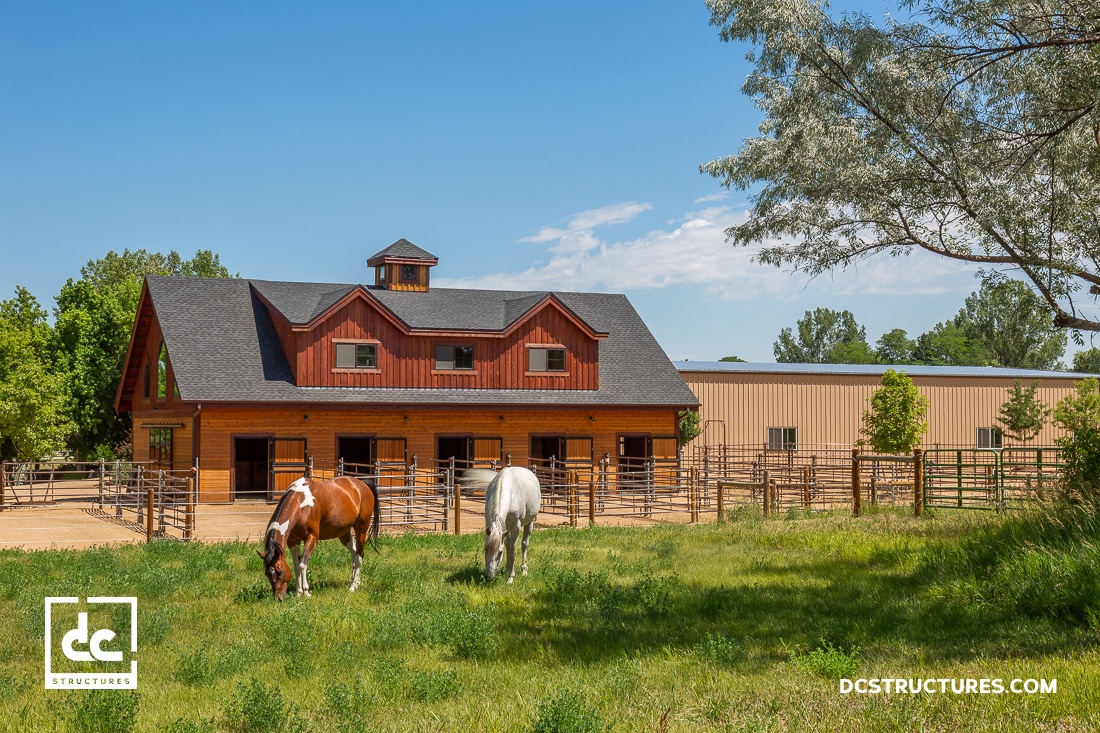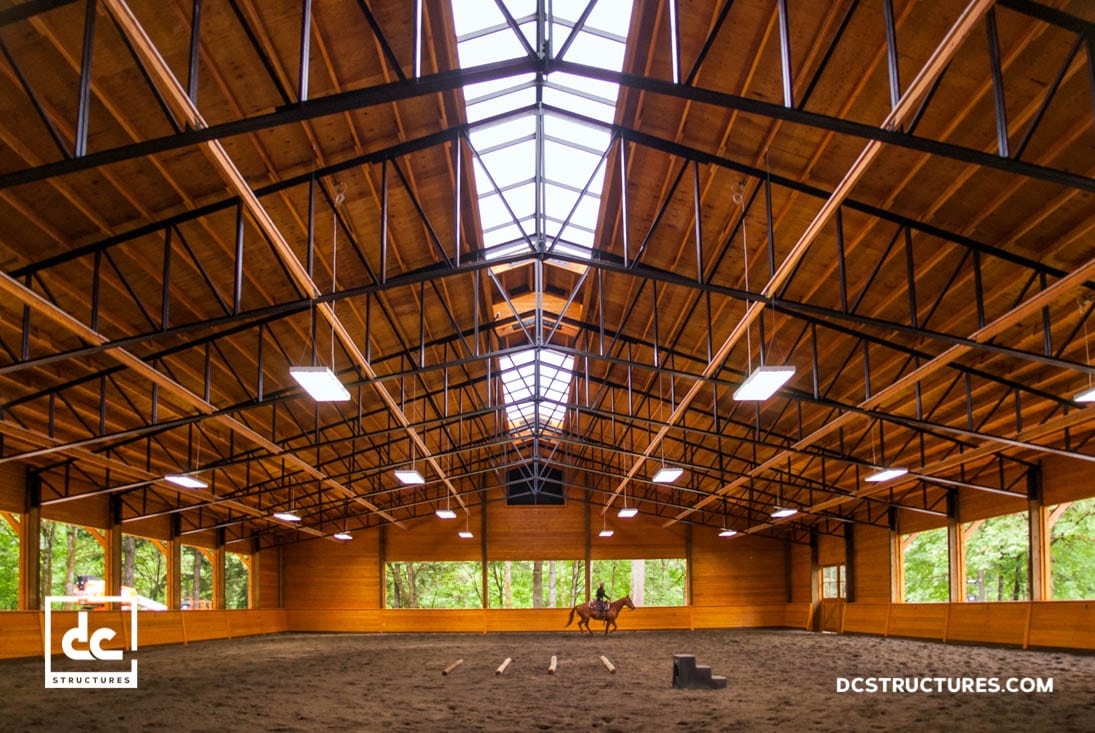Horse barn safety is DC Structures’ top priority when it comes to designing our top-of-the-line barn kits. Injuries pose a real threat to horses, as the road to recovery can be especially arduous for them. There are a number of preventative measures you can take to ensure the safety of your four-legged equine friends. Read on for our recommendations for best practices.
DC Structures’ top-8 horse barn safety tips
- All barn materials should be free of chemical treatments as they present health risks to horses that chew on them. DC Structures uses top-grade untreated lumbers for its post-and-beam kit designs.
- The areas within and around a barn should always be free of clutter. Loose items scattered about the aisles are a safety hazard.
- Walkways should be no less than 12’ wide to allow horses to pass freely and turn around with ease. DC Structures’ barn kits all include plans that meet this requirement.
- The aisle ways should have an even and well-tractioned surface. Textured concrete or dirt without rocks are both great options.
- Stall fronts should have smoothed edges to avoid injury to the horse. All DC Structures horse barn packages include Classic Equine’s powder-coated, pre-galvanized steel stall fronts, designed specifically to protect your horse from scratches.
- The only direction a stall door should swing is outward, as inward-swinging doors can create potentially dangerous situations for caretakers if the horse is anxious to get out.
- Barn lighting should be mounted high away from a horse’s reach, or otherwise secured within strong wire casing.
- Floor-to-ceiling height should be adequate for rearing horses. DC Structures designs its barn kits with a minimum of 9’ from the floor to the ceiling.
To learn more about DC Structures’ top-of-the-line horse barn kits, request our digital catalog.






